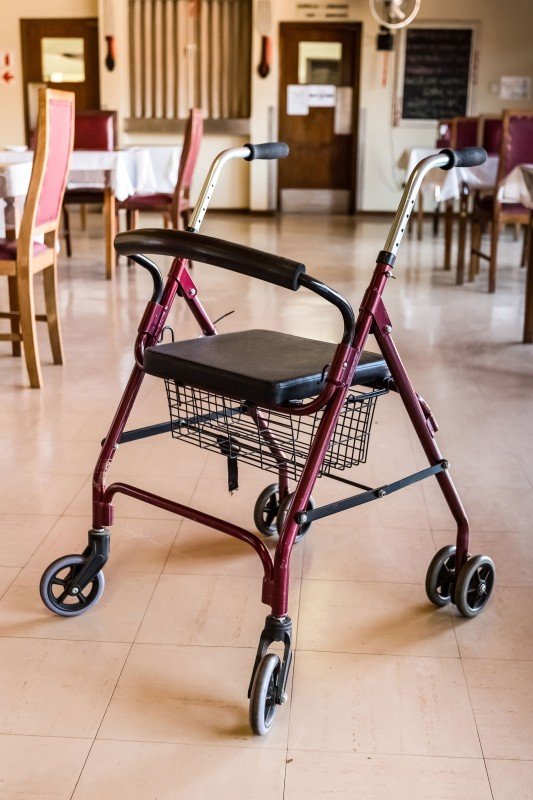Navigating the World of Mobility Scooters: A Comprehensive Guide
In an age where mobility is progressively recognized as an essential aspect of lifestyle, the demand for assistive gadgets has risen. Among these, mobility scooters stick out as a flexible and empowering alternative for people with mobility difficulties. This extensive guide looks into the world of mobility scooters, using insights into their types, benefits, purchasing factors to consider, and upkeep ideas.
Understanding Mobility Scooters
Mobility scooters are motorized vehicles created to help individuals with mobility concerns in moving around more freely and independently. They are especially useful for those who discover walking difficult due to conditions such as arthritis, several sclerosis, or post-surgical healing. Unlike manual wheelchairs, mobility scooters need minimal physical effort, making them an excellent choice for extended use.
Types of Mobility Scooters
Three-Wheel Scooters
- Pros: More maneuverable, lighter, and easier to save.
- Cons: Less steady on rough terrain.
- Best For: Indoor and smooth outdoor surface areas.
Four-Wheel Scooters
- Pros: More stable, better on rough terrain, and can bring heavier loads.
- Cons: Bulkier and less maneuverable.
- Best For: Outdoor use, especially in parks and on uneven surfaces.
Portable Scooters
- Pros: lightweight Scooters, foldable, and simple to transportation.
- Cons: Limited variety and speed.
- Best For: Travel and periodic usage.
Sturdy Scooters
- Pros: Built to manage heavier users and rugged environments.
- Cons: More pricey and less portable.
- Best For: Users over 300 pounds or those who need to browse rough terrain.
Standing Scooters
- Pros: Provide a standing position, which can be useful for users who can not sit for long durations.
- Cons: Limited stability and range.
- Best For: Users who choose standing and require short-distance assistance.
Benefits of Mobility Scooters
Enhanced Independence
- Mobility scooters allow users to take a trip longer ranges without tiredness, allowing them to participate more completely in daily activities and gatherings.
Improved Safety
- With features like seat belts, anti-tip wheels, and brake systems, mobility scooters offer a much safer option to manual wheelchairs and strolling help.
Comfort and Support
- Adjustable seats, back-rests, and armrests make sure a comfortable trip, decreasing the stress on the user's body.
Affordable
- While the initial financial investment can be significant, mobility scooters are often more cost-efficient in the long run compared to regular taxi rides or specialized transport services.
Social Inclusion
- Mobility scooters assist in higher social interaction by making it possible for users to take part in community activities and keep a more active way of life.
Factors to Consider When Buying a Mobility Scooter
User Needs and Abilities
- Examine the user's physical condition, mobility requirements, and day-to-day activities to identify the most ideal type of scooter.
Size and Weight Capacity
- Guarantee the scooter can accommodate the user's size and weight conveniently and safely.
Variety and Speed
- Consider the normal range and speed required for everyday usage. Some scooters have a variety of as much as 30 miles on a single charge.
Portability
- If travel is a concern, go with a portable scooter that can be easily disassembled and transported.
Maintenance and Support
- Choose a respectable maker that offers dependable customer support and upkeep support.
Budget plan
- Set a budget plan and check out options that offer the very best value for money. Think about funding alternatives and possible insurance coverage.
Maintenance Tips for Mobility Scooters
Regular Cleaning
- Tidy the scooter routinely to avoid dirt and debris from affecting its performance. Use a soft cloth and mild cleaning agent.
Battery Maintenance
- Follow the producer's guidelines for battery charging and upkeep. Regularly inspect the battery level and prevent deep discharges.
Tire Inspection
- Examine the tires for wear and correct inflation. Change or fix as needed to guarantee a smooth and safe trip.
Lubrication
- Lubricate moving parts such as the chain and equipments to reduce friction and prevent wear.
Professional Servicing
- Arrange routine professional maintenance to deal with any issues and guarantee the scooter stays in optimal condition.
Frequently Asked Questions About Mobility Scooters
Are mobility scooters covered by insurance coverage?
- Some insurance coverage plans, consisting of Medicare, may cover the expense of mobility scooters under certain conditions. Contact your company for specific details.
Can I use a mobility scooter inside?
- Yes, many mobility scooters are developed for both indoor and outdoor usage. Guarantee the scooter appropriates for the type of surfaces you will be browsing.
How quick can mobility scooters go?
- The speed differs by design, however a lot of mobility scooters have a maximum speed of 4 to 8 miles per hour.
Do I need a license to run a mobility scooter?

- In a lot of nations, a license is not needed to operate a mobility scooter. However, it is necessary to follow local policies and traffic laws.
Can I take a trip with a mobility scooter?
- Many mobility scooters are designed to be portable and can be taken apart for travel. Consult airlines and transportation companies for particular requirements.
Mobility scooters are a transformative tool for individuals with mobility difficulties, using a mix of independence, safety, and convenience. By comprehending the various types of scooters, thinking about essential buying elements, and following upkeep best practices, users can make the most of their mobility scooter and lead a more active and satisfying life. Whether for daily commutes or leisurely getaways, a well-chosen mobility scooter can be a valuable buddy on the journey to improved mobility and lifestyle.


